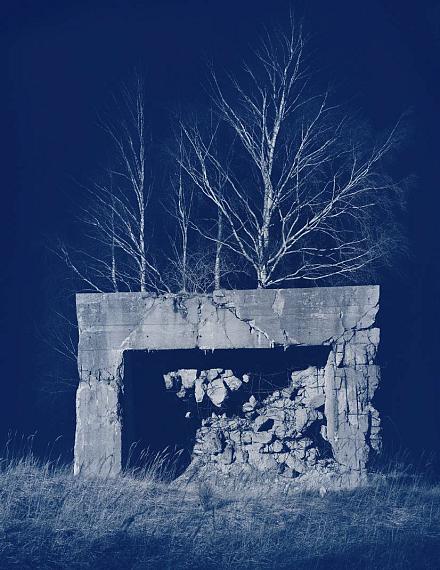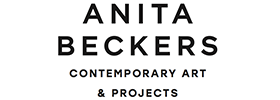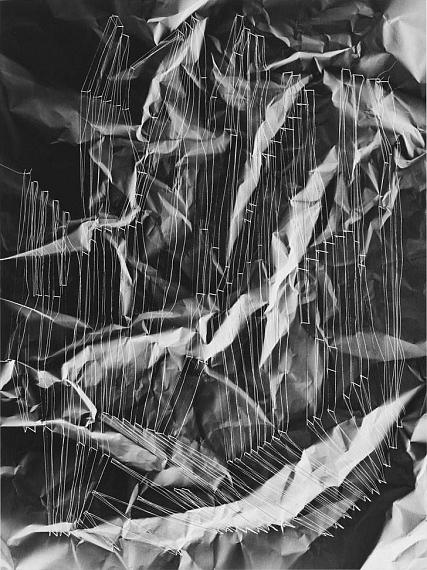
Bunkerbeschussplatte, 2021
C-Prints, 9 pieces, 40 x 30 cm each
Edition of 3 + 2 AP
Paris Photo 2024 - Group show
Booth B53
Christiane Feser » Andreas Mühe » Annegret Soltau » Anaïs Tondeur »
Fair: 7 Nov – 10 Nov 2024
Wed 6 Nov
Paris Photo - Grand Palais
7 avenue Winston Churchill
75008 Paris

Galerie Anita Beckers
Braubachstr. 9
60311 Frankfurt (Main)
+49 (0)69-92101972
info@galerie-beckers.de
www.galerie-beckers.de
Tue-Fri 11-18, Sat 12-17

le trèfle, l’abeille, 2023
Pigment Print auf Hahnemühle Fine Art Papier
70 x 50 cm
Edition of 5
Annegret Soltau (*1946) is a pioneer in the field of feminist art
and Body Art, however, her works still generate controversy
today. Again and again her artworks are considered offensive,
are censored or pulled from exhibitions. In the digital age where
the internet offers an anyonymous platform to users, such
concrete and physical images seem disconcerting. Today, her
work boasts an unbroken authenticity. For over 40 years, the
artist has occupied herself with her physical and mental
identity. In doing so, she utilizes her environment, her family
and children over and over in her work.
During her two pregnancies, German artist and performer Annegret
Soltau documented how her body changed with video and
photography. By scratching, cutting, collaging, and stitching, the
artist altered and reconfigured the negatives. The work is an
expression of a fragmented identity and also juxtaposes the roles of
woman, artist, and mother. Auf dem Gebärtisch [On the birthing
table] is a photographic triptych that portrays the naked body of the
pregnant artist. Sitting on a delivery table, the figure gradually
emerges from a white sheet that is draped around it like a shroud.
This photomontage raises questions about medically assisted
reproduction, and the physical body is both the medium and subject
of this intervention.
Christiane Feser (*1977) is known for her ongoing series of
photo-objects: three-dimensional, photographic sculptures
that behave like representational and optical experiments;
simultaneously exploring the perceptions of a camera and
a person. By transforming the flat print back into a
dimensional object with its own sense of time and space,
she shatters the basic tenet that a photograph reproduces
a scene existing elsewhere.
Anchored in ecology thought Anaïs Tondeur searches for a new
form of political art. Crossing natural sciences and anthropology,
myth making and new media processes, she creates speculative
narratives and engages on investigations through which she
experiments other conditions of being to the world. Working with
photographies, installations, or videos. she seeks a new aesthetic,
in the sense of a renewal of our modes of perception, and explores
beyond the separation between nature and culture, other modes
of relationships with humans and other than humans.
At the foreground of her practice are elusive elements of the
climate (but also of us), namely radioactive traces, soot particles,
waning plants, a prehistoric whiff, human tears—all pointing to the
intricate inextricability between our bodies and the world. And all
encountered in sites of late industrialism—decaying
infrastructures such as former photographic factory sites, nuclear
exclusion zones, polluted skies, and planetary spaces where ruins
are not inert, but alive with residues unexpectedly full of
potential. It is through such places that Tondeur’s work breeds
novel engagements, pointing to alternative forms of (toxic)
relationalities and photographic materialities.
Andreas Mühe (*1979) is one of the best-known artists in
Germany. He became internationally known through his
exploration of German history and identity. In his photographs
he deals with sociological, historical and political themes,
which he stages in special environments with elaborate
lighting contrasts.
As monumental forms made of concrete, bunkers crisscross
Europe's landscape. The dark past is firmly inscribed in the
bunkers. But their archaic form, far removed from ideological
tastes and planned purely for utility and efficiency, removes
them from any temporal and spatial classification. What is
past here can be future somewhere else, and vice versa. In all
its monumentality, weight and hardness, the bunker
paradoxically represents the flow of history and meaning. The
only constant is the gap between the function of attack and
protection. While on the French coast the bunkers are now a
popular meeting place for young people and a playground for
children, elsewhere in the world new bunkers are being built
for war.

Makierungen 03, 2024
Photo-Object, Archival Inkjet Pigment Print, map pins and thread
80 x 60 x 1 cm
Unique piece